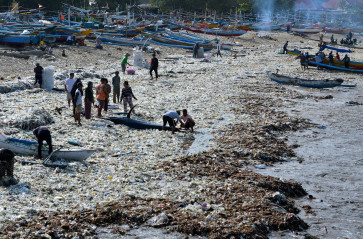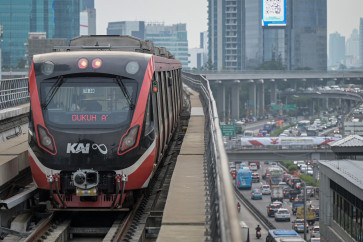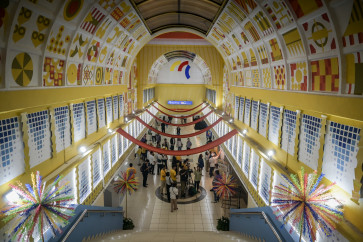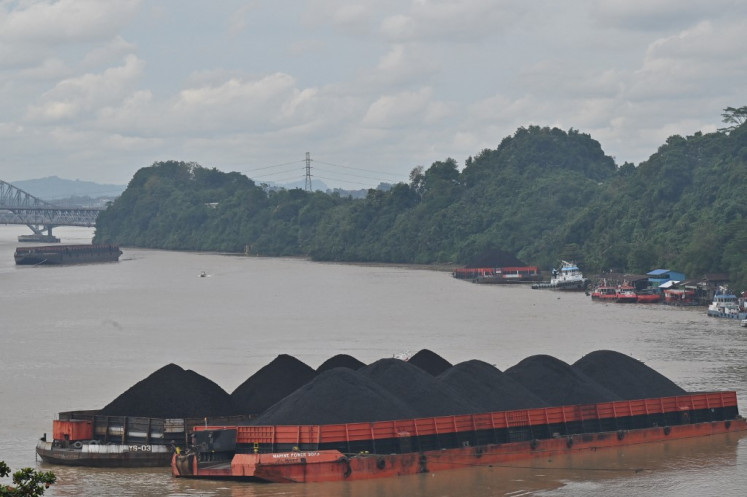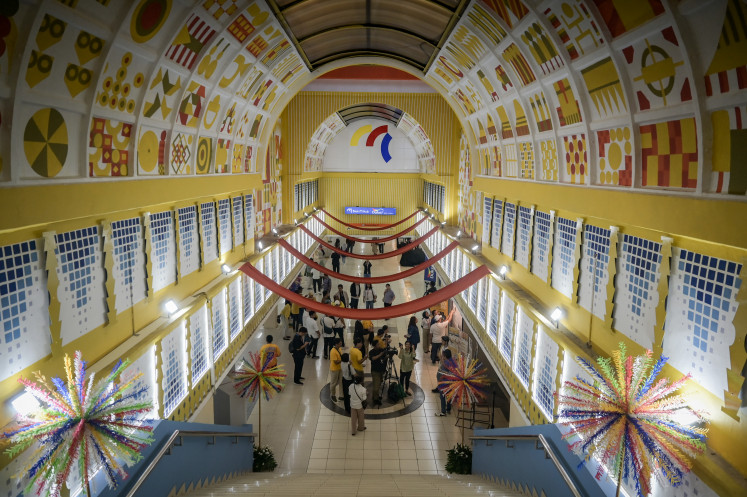BPMigas may build petrochemical facility
Well worth it!: An exhibition participant walks past a booth in a gas industry exhibition at Indogas 2009 at the Jakarta Convention Center, on Tuesday
Change text size
Gift Premium Articles
to Anyone

Well worth it!: An exhibition participant walks past a booth in a gas industry exhibition at Indogas 2009 at the Jakarta Convention Center, on Tuesday. Local and international gas companies flock to the event to tap growing business opportunities in the one of the world’s largest gas producing countries. (JP/Ricky Yudhistira)
To increase downstream gas supplies for local industrial use, upstream oil and gas regulator BPMigas is looking to take up part of the gas reserves in the Tangguh gas field operated by British energy giant BP in order to supply a new petrochemical facility.
BPMigas chairman Raden Priyono said Tuesday on the sidelines of an international gas conference that it planned to use up to 3.7 trillion cubic feet (TCF) of uncommitted gas reserves from the Tangguh field to help supply fertilizer and petrochemical plants.
The reserves form part of the existing 14.4 tcf of proven gas reserves in Tangguh, located in the Bintuni Bay area in Papua.
“BP will drill to prove the existence of the reserves by the end of 2009,” Priyono said.
If the results are positive, the government will then build a petrochemical facility, including new fertilizer plants in Papua.
This project will be carried out as part of BP’s plan to build a third LNG gas plant unit, or gas train, for LNG exports.
Currently, BP has two trains operating in the region with a total capacity of 7.6 million tons of
LNG per annum.
BP has said the first gas would be ready for shipment in April, although the government is currently negotiating with Chinese buyers to increase the selling price, which was set relatively low under the initial contract.
Having secured orders from South Korea, China and the US, BP still plans to build additional trains to tap the vast gas reserves in the region.
It is also committed to supply part of the gas for downstream domestic market use.
Tangguh will sell LNG to overseas buyers — China’s Fujian, South Korea’s K-Power and Posco and to Sempra Energy on the west coast of Mexico.
Joko Harsono, BPMigas deputy chairman for fi nance, economy and marketing, said the plan to set up these petrochemical facilities was first aired after Vice President Jusuf Kalla’s visit to the Tangguh plant last December.
Kalla had requested BPMigas to build a petrochemical industry facility in the region to meet the increasing demand for fertilizer in the country.
The demand for fertilizer is expected to increase to 7 million tons this year.
The Tangguh gas field is being developed by a consortium of BP Plc, (37.16 percent), MI Berau (16.3 percent), CNOOC (13.9 percent), Nippon Oil (12.23 percent), KG Berau/KG Wiriagar (10 percent), LNG JapanCorporation (7.35 percent) and Talisman (3.06 percent).
Priyono also said the government is looking for more gas supplies for industrial needs in other gasrich projects like Masela in the Timor Sea.
He did not elaborate further whether the gas block operator, Japan’s Inpex, is required to allocate some of its gas reserves for domestic demand and local industry.
BPMigas expects the new block to start production by 2014 at a rate of 4.5 million tons per annum.
Indonesia is expected to see a rise in gas demand by 2.8 percent annually, reaching 6 billion cubic feet per day by 2020.

